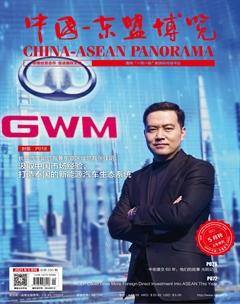世界的繁榮離不開中國
Dulyapaween Kronsaeng 黃怡哲
不久前,中國審議通過了“十四五”發展規劃,中國經濟問題研究專家、泰國法政大學經濟學院阿順詩·帕尼察叁副教授在接受本刊記者專訪時表示,中國“十四五”規劃為其國民經濟發展遠景制定了目標和方向。她認為此次“十四五”規劃也可視為“經濟穩定規劃”,中國追求的更多是穩定發展,尤其是從技術安全、食品安全、公共衛生安全三方面推動經濟穩定發展,而不是單純追求經濟高增速。
以科技自立自強支撐新發展格局
阿順詩副教授分析說,中國經濟政策的制定要“穩”,新冠肺炎疫情沖擊、中美貿易摩擦等外部風險提升,可能影響中國未來長期的發展。為此,中國將更多地依托內需,減少對外依賴,尤其是核心技術。
“過去,依賴國外技術是中國科技業的軟肋,同時還伴隨著風險。例如,半導體等關鍵核心技術遭遇瓶頸,使中國對此體會更為深刻。中國從中汲取教訓,將更注重基礎技術研發,通過制定《中國標準2035》,提出了到2035年成為全球技術領導者的目標。”阿順詩副教授說。
技術安全方面,在“十四五”規劃中,除了研發支出將年增7%之外,中國瞄準7大前沿領域,實現科技高水平自立自強,包括:新一代人工智能、量子信息、腦科學與類腦研究、集成電路、基因與生物技術、臨床醫學與健康、深空深地深海和極地探測。
“中國將加強面向國家戰略需求的基礎前沿和高新技術研究,強化國家戰略科技力量,一旦取得成功,中國將成為世界科技強國,引領世界科技潮流。”阿順詩副教授說。
中國經濟“雙循環”時代開啟
突如其來的新冠肺炎疫情,讓中國對食品和健康安全的關注度大幅提升,并持續出臺一系列扶持農業生產的政策措施,包括進一步擴大糧食種植面積。即使部分農產品生產成本高于進口,但中國仍選擇依靠自己的力量養活14億人口,讓“中國飯碗”更“瓷實”。保障國內糧食安全,不論發生什么,中國都無需懼怕外部環境的壓力,并加快構建國內國際雙循環相互促進的新發展格局。
“新冠肺炎疫情危機和國外壓力升溫,促使中國更加注重經濟運行求‘穩——科技自立自強,國內經濟更加強勁,國民收入提高,新一代中產階級消費崛起,掀起新的消費浪潮。”阿順詩副教授說,“但這并不意味著中國從此就對外關上了大門,相反,中國開放的大門只會越開越大,將從最大出口國變成最大進口國。中國擁有巨大的消費群體,通過實施擴大內需戰略拉動經濟增長,對各國都有著巨大的吸引力,為此,世界的繁榮也需要中國。例如,泰國旅游收入高度依賴中國游客,每年泰國接待中國游客達1000萬人次。”
綜上所述,阿順詩副教授認為,如何為更好地適應時代的發展和進步,抓住中國機遇,成為泰國當下面臨的巨大挑戰;同時要學會分散風險,實現經濟平衡發展。
她指出,中國經濟跨越式增長,無疑給競爭對手或包括泰國在內的制造商帶來壓力。但無需過于擔憂,應該將壓力轉變為動力,以更好地實現自我調整,從中國經濟新格局中尋找機遇。其中,中國消費者的購買力不可忽視,例如,泰國旅游業要由數量型向質量型轉變,深挖更注重健康旅游的高端游客群體,關注老年旅游這一具有潛力的藍海市場,也稱為“銀發經濟”。
“此外,泰國在中國高度重視的清潔能源方面也存在無限的合作空間,這與泰國BCG經濟新模式(包括生物經濟、循環經濟和綠色經濟)相契合。如果中泰兩國持續保持良好關系,泰國可在多個潛力領域與中國經濟新格局尋求對接,深化合作實現雙方互利共贏。”阿順詩副教授補充道。
·來源:《TAP東盟博覽》
Not long ago, China deliberated and passed the 14th Five-Year Plan. In the exclusive interview with the reporter from Thailand-ASEAN Panorama, Dr. Aksornsri Phanishsarn, Expert on Chinas Economy and Associate Professor of Faculty of Economics of Thammasat University said that the 14th Five-Year Plan sets clear goals and directions for Chinas economic development. She believes that the Plan is also a move to stabilize the economy. Instead of fast economic growth, China pursues stable development, especially economic stability boosted by technical safety, food safety and public health safety.
Support new development pattern with science and technology
Dr. Aksornsri Phanishsarn said that Chinas economic policy formulation should be “stable”, as the impact of the COVID-19, trade friction between China and the US, and other external risks may affect Chinas long-term development in the future. To this end, China will rely more on domestic demand and less on external sources, especially core technologies
“Relying on foreign technology has always been a weakness of Chinas science and technology industry and it was often accompanied by risks, especially in core technologies like semiconductor. Drawing lessons from this, China is determined to focus more on the R&D of basic technology. Through formulating China Standards 2035, China has put forward the goal of becoming a global technology power by 2035,” said Dr. Aksornsri Phanishsarn.
In technical safety, it is clear in the 14th Five-Year Plan that in addition to a 7% increase in the annual expenditure of R&D, China aims at seven leading-edge areas to achieve high-level scientific and technological self-reliance, including the new generation of artificial intelligence, quantum information, brain science and brain-like intelligent technology, integrated circuit, gene and biotechnology, clinical medicine and health, deep space, deep earth, deep sea and polar exploration.
“China will strengthen the basic frontier and high-tech research following national strategies and enhance the national scientific and technological strength. Once successful, it will become the new global science and technology power, leading the development trend,” said Dr. Aksornsri Phanishsarn.
China ushers in the era of economic dual circulation development
The outbreak of the COVID-19 has drawn peoples attention to food and health safety. A series of policies and measures to support agricultural production have been launched in China, including enlarging the area of grain cultivation. Although the cost of producing some agricultural products is higher than that of imports, China still chooses to support the 1.4 billion people on its own, making its “rice bowl” more “solid”. Ensuring domestic food security is of great importance. No matter what happens, China will withstand any pressure from the international environment and concentrate on speeding up the construction of the dual circulation development pattern, with domestic and international development reinforcing each other.
“Uncertainty brought by the COVID-19 and pressure from abroad have forced China to stabilize its domestic economic development, for example, being independent in science and technology, pursuing stronger domestic economic development, increasing national income, cultivating a new generation of middle class, and boosting domestic consumption. However, it does not mean that China has closed its door to the outside world. On the contrary, China will open its door even wider, turning to the largest importer from the largest exporter. China has a large consumer base. Through expanding domestic demand to promote economic development, its attraction to foreign countries will be even greater. Therefore, the prosperity of the world is inseparable from China. Take Thailand as an example, its tourism revenue is highly dependent on China, with 10 million of Chinese tourists coming every year.”
To sum up, Dr. Aksornsri Phanishsarn believes that to better conform to the development trend and seize the opportunities from China, Thailand needs to adjust itself, dispersing risks, and achieve balanced economic development.
She pointed out that Chinas leapfrog economic development undoubtedly brings pressure to competitors and manufacturers such as Thailand. Instead of worrying, Thailand should turn the pressure into a driving force, so as? to better adjust itself and seek opportunities from Chinas new economic development pattern.? For example, if Thailand wishes to transform its quantity-oriented tourism industry into quality-oriented, the high-end tourists who lay stress on health tourism should not be ignored. The senior tourism is also a potential market worth exploring.
“In addition, Thailand has unlimited space for cooperation with China in clean energy. It not only coincides with Thailands Bio-Circular-Green Economic Model or BCG, but also is highly valued by China. If China and Thailand continue to maintain good relations, Thailand can seek more cooperation with China in various potential areas, achieving mutual benefit and win-win results,” said Dr. Aksornsri Phanishsarn.
· Source: Thailand-ASEAN Panorama
· Editor in Charge: Li Min

